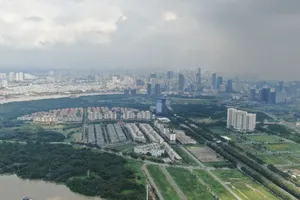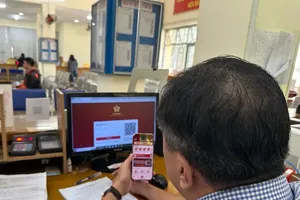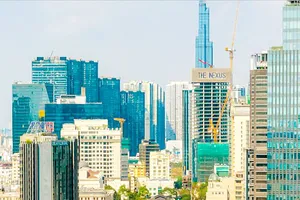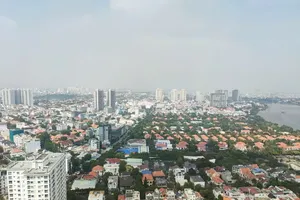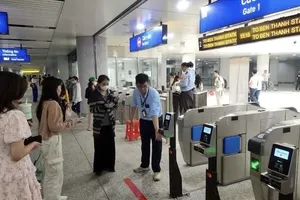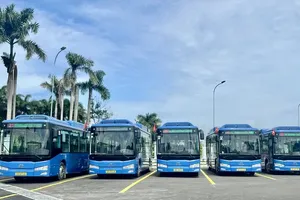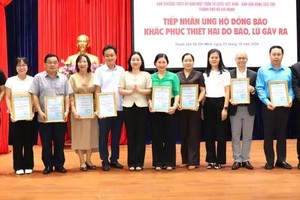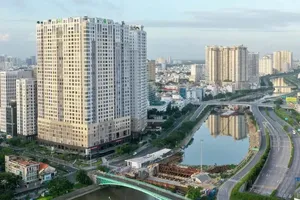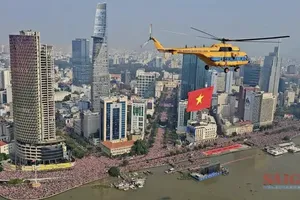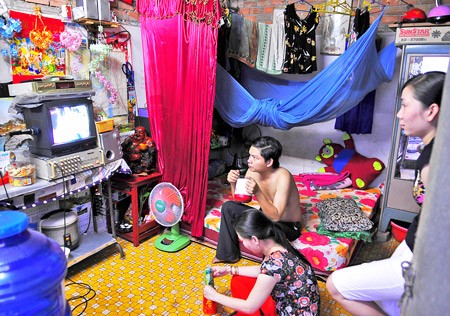
While Ho Chi Minh City’s recent population boom has helped boost the local economy, residential management authorities say that dealing with the huge influx is overwhelming.
According to public security regulations, in the city’s inner districts, each police officer is supposed to monitor 300-700 households. But in Tan Binh District’s Ward 15, each officer has to monitor 1,000-1,500 homes which house around 5,000 people.
There are 1,415 houses in Tan Phu District’s Tay Thanh Ward, which have been divided into 14,000 rooms for 15,372 boarders. Thus, each ward police officer is in charge of supervising up to 5,000 people.
Many criminals have taken advantage of the loose control to run illicit operations in the area. With such lax monitoring, criminals are able to easily evade detection by simply moving houses and not registering as temporary residents.
Police recently raided 165 houses in Tay Thanh Ward and found 363 people residing illegally as they hadn’t registered with local authorities.
In 2009, Tay Thanh Ward police discovered 32 criminal offenses and arrested 44 individuals. The crimes included one murder, nine instances of gambling, and eight drug trafficking cases. Most offenders had moved to HCMC from other provinces.
In District 12’s Hiep Thanh Ward, meanwhile, there are just 28 police officers responsible for supervising up to 70,000 residents in the area. Each officer monitors 2,000 households with more than 6,000 people, three times higher than regulations stipulate.
Party Committee Secretary of the ward Nguyen Van Nam said local authorities are struggling to control public security because of the population boom. The increased numbers also put a severe strain on HCMC’s infrastructure, and healthcare and education systems.
The city has tried to ease the problem by splitting large districts and wards into smaller ones to make it easier for residential management authorities. Some areas have requested further divisions to disperse human resources more efficiently as a lack of personnel citywide plagues authorities.
According to the law, each ward or commune is only supposed to manage around 5,000-6,000 residents. But some places are currently managing a staggering 100,000 people or more.
The population explosion shows no sign of stopping while the number of people who are officially allowed to become HCMC citizens is expected to rise to hundreds of thousands after the Residence Law takes effect on July 1, 2007.
Tan Binh District in particular, made nearly 50,000 more people legal residents.
According to Senior Lieutenant Colonel Tran Van Trinh, deputy head of Tan Binh District’s Police Department, there are several loopholes in the Residence Law, which many people from out of town are taking advantage of to become legal HCMC residents.
The law must be amended soon before the population grows even further, Mr. Trinh said.
Infrastructure, environment pushed to limits
Many houses have been built haphazardly by newcomers to the city, hurting city planning efforts.
The rapid population hike has also caused a reduction in the agricultural land in Go Vap District where thousands of houses have been built illegally.
In Tan Phu District’s Tay Thanh Ward, the establishment of new, unsanctioned residential areas has led to a mushrooming of informal markets, causing more chaos in the area.
The environment is also taking a beating from the increasing numbers of residents in the city. Canals and other waterways serve as garbage receptacles and have been pushed to the brink of total contamination.
According to the latest figures from the HCMC Statistics Office, the city sees an average increase of 208,000 people a year, almost equal to the population of a city district.
HCMC’s population now stands at 8 million, and experts forecast it will rise above 10 million by 2020.
Related article:
HCMC population boom hurting residents’ quality of life



